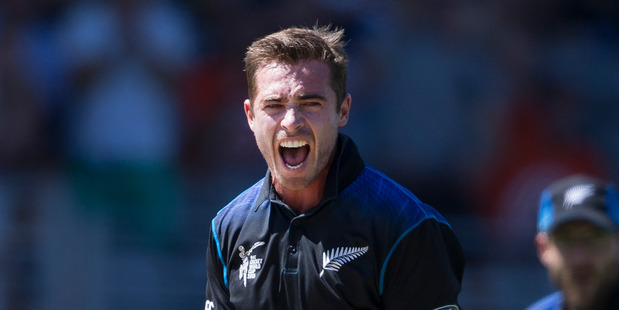Just as tomorrow’s Rugby World Cup final has the breakdown earmarked as a clutch issue in the outcome, so too does the test cricket series between the countries have its possible game-breaker matchups.
None more so than the battle of the fasties, pitching New Zealand’s Northern Districts pair Tim Southee and Trent Boult against Australian left arm Mitchells, Johnson and Starc.
On that clash, and more specifically, who can inflict more damage on the opposing batting group, the series may be decided.
Remember the first two tests are on traditionally hard, fast and bouncy pitches in Brisbane and Perth, while there are strong indications the ground staff are being encouraged to leave more grass on the pitch at Adelaide for the pink ball day-nighter to help ensure the experimental balls stay in good shape.
In the last five tests in Brisbane, seamers have taken 107 out of 146 wickets, or 73.2 per cent.
All four are quality performers, ranking high in the test and ODI game.
In terms of test experience, Boult was the most recent to begin his test career, one match after Starc, both during New Zealand’s last tour of Australia, the rubber split 1-1 in 2011.
Starc has the least test experience but has turned himself into a one-day wizard, bowling full and swinging the white ball late, as best evidenced during last summer’s World Cup when he snared six for 28 against New Zealand at Eden Park among 22 wickets at just 10 in the tournament.
His scattering of Brendon McCullum’s stumps in the first over of the final was perhaps the decisive moment in that decider in Melbourne.
But Starc’s test results have been less noteworthy. His average is the highest of the quartet, albeit only marginally above Southee’s. However his domestic one-day form has been strong, with piles of wickets, again largely operating to a full length.
Starc has also overcome the potential career-damaging burden of being labelled soft last season by that mischievous analyst Shane Warne.
Johnson’s career has been the longest and after returning from a year’s absence through 2012, he struck a devastating patch of form, notably against England.
He considered retirement after this year’s Ashes disappointment – 15 wickets at 34.9 – and needs to find the spur to regain that vital fifth gear.
He likes the Gabba. In six tests there, he’s taken 30 wickets at 23 apiece. He has a liking for New Zealand batsmen too. In four tests, he’s taken 26 New Zealand wickets at 16.57.
Johnson is also five wickets shy of overtaking Brett Lee and become Australia’s fourth most successful test bowler, behind Warne, Glenn McGrath and Dennis Lillee.
Southee began his test career with a roar, five for 55 against England at Napier in 2008 as a 19-year-old.
But after a flatter period, during which he lost his test place for a time, Southee has been a stellar performer since touring England in 2013. His last 17 tests have produced 73 wickets at 26.5, his control of line and length is impressive and when he’s on song can make the ball talk.
Boult’s game has come on in giant strides, to the point where only South African pace king Dale Steyn, Pakistan’s latest mercurial legspinner Yasir Shah, and England pair Jimmy Anderson and Stuart Broad are ranked ahead of him in tests.
In his last 15 tests, Boult’s taken 71 wickets at 23.0, his sharply dipping in-swing proving a five-star threat.
“We’ll just continue what we’ve been doing,” Southee said. “It’s about going over and ticking another box.”






















